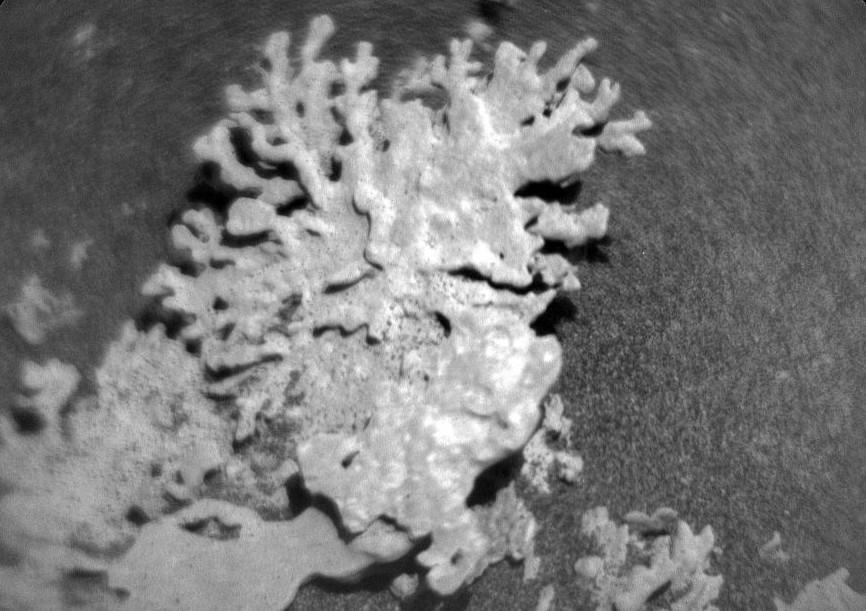
Coral-shaped Rock Spotted on Mars, NASA Shares Pic
In a fascinating discovery, NASA’s Curiosity Mars rover has sent back stunning black and white images of a rock on the Martian surface that bears a striking resemblance to a piece of coral. The rock, which was found in the Gale Crater, a large impact basin on Mars, is believed to be a billion years old. The discovery has sent shockwaves among scientists and space enthusiasts alike, sparking widespread curiosity about the origins and composition of this peculiar Martian rock.
The rock was spotted using the rover’s ChemCam instrument, a laser-induced breakdown spectroscopy instrument that is equipped to analyze the chemical composition of rocks and soil on Mars. The instrument uses a high-powered laser to vaporize the surface of the rock, and then analyzes the resulting plasma to determine the chemical makeup of the rock.
According to NASA, the coral-like rock is a type of sedimentary rock that was formed from ancient lake sediments. The rock is composed of calcium carbonate, which is a common mineral found in many types of rocks on Earth. However, the unique shape and texture of the rock are unlike anything seen before on Mars, leading scientists to believe that it may have formed in a very different environment than the rocks found on our own planet.
The discovery of the coral-shaped rock is a significant find for scientists studying the geology of Mars. The rock provides valuable insights into the ancient history of Mars, including the presence of water and the potential for life on the planet billions of years ago. The rock’s calcium carbonate composition is also a key indicator of the presence of water on Mars in the past, as calcium carbonate is often formed through the interaction of water and minerals.
The Gale Crater, where the coral-shaped rock was found, is a prime location for studying the geology of Mars. The crater is believed to have been formed by a massive asteroid impact around 3.5 billion years ago, and its rim is thought to have been shaped by the erosion of water and wind over millions of years. The crater is also home to a variety of different rock types, including sedimentary, igneous, and metamorphic rocks, making it an ideal location for studying the geological history of Mars.
The Curiosity rover is just one of several NASA spacecraft that have been sent to Mars in recent years. The rover, which is about the size of a small car, has been exploring the Martian surface since 2012 and has traveled over 20 kilometers since its landing. The rover is equipped with a variety of instruments that allow it to study the geology, climate, and potential habitability of Mars.
The discovery of the coral-shaped rock is just the latest in a long line of exciting findings from the Curiosity rover. In 2015, the rover discovered evidence of ancient lakes on Mars, which provided strong evidence for the presence of water on the planet in the past. The rover has also found evidence of methane on Mars, which could be a sign of microbial life on the planet.
As NASA continues to explore Mars with the Curiosity rover, scientists are eager to learn more about the planet’s geological history and the potential for life on Mars. The discovery of the coral-shaped rock is an important step in that process, and provides valuable insights into the evolution of Mars over billions of years.
Source: https://www.jpl.nasa.gov/images/pia26634-curiositys-chemcam-views-a-rock-shaped-like-coral/






